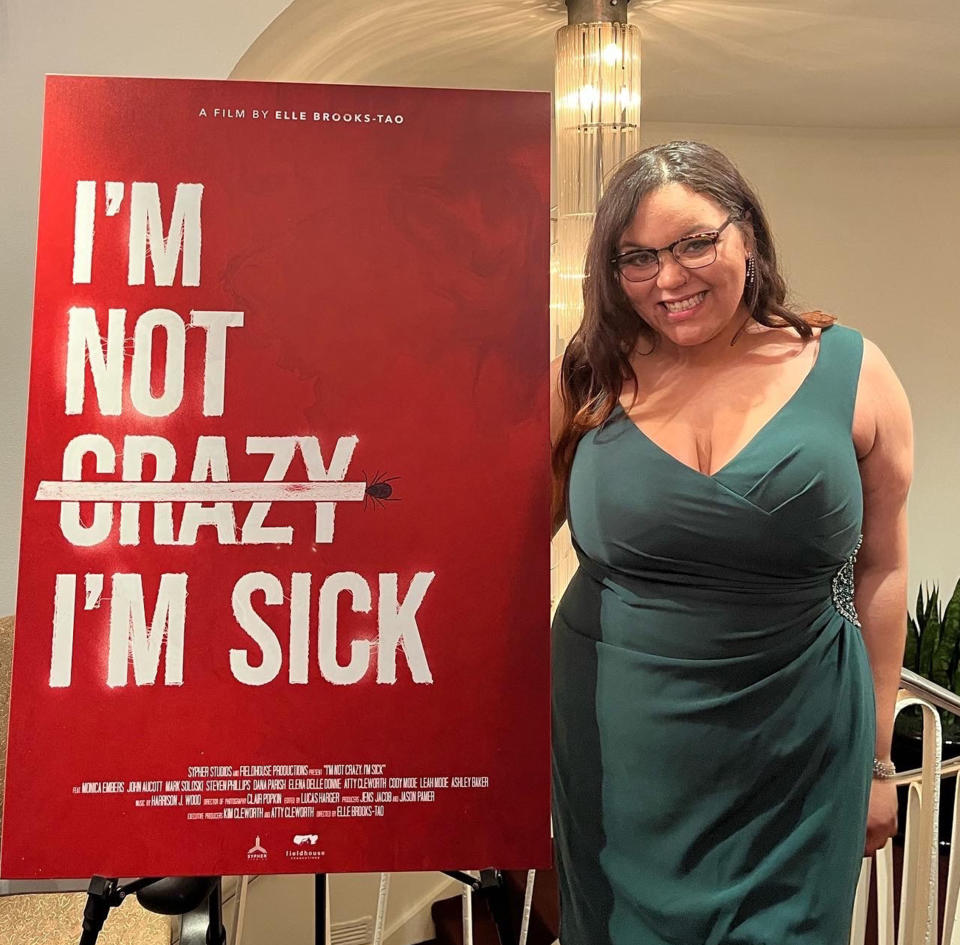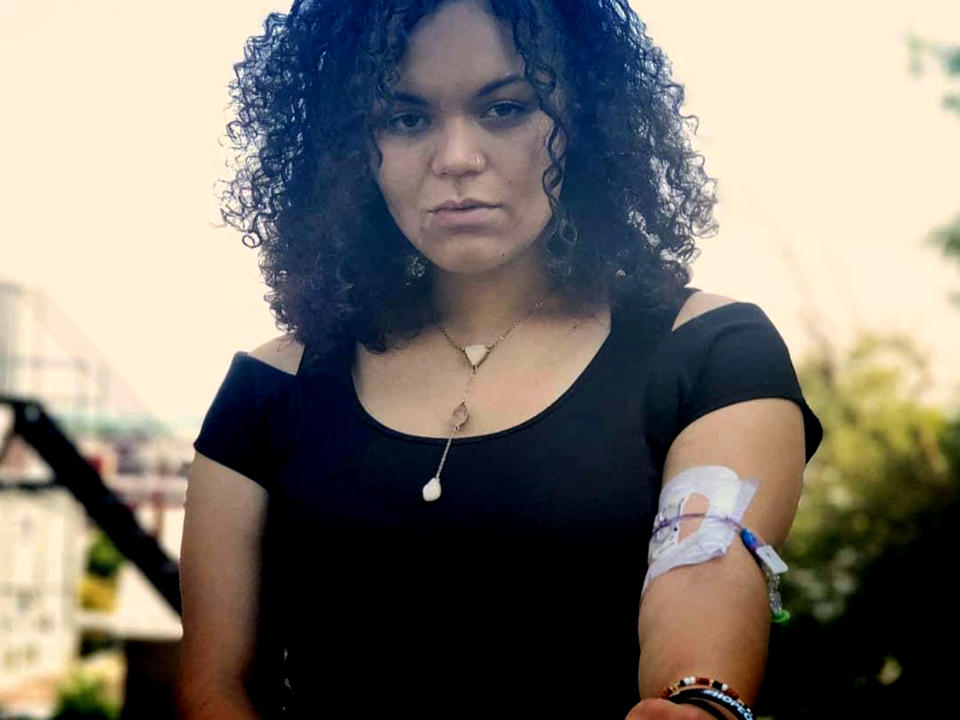Her knee pain was dismissed by doctors. After 9 months of ‘gaslighting,’ she got a diagnosis
After Ashley “Ash” Baker tore the meniscus in her right knee when she was 23, she started to experience weird symptoms. Then her pain became so bad that she couldn’t even do physical therapy. Doctors tried understanding what was happening to her.
“My doctors started going down that full list of what’s wrong. … 'Maybe you’re depressed. Maybe you have rheumatoid arthritis,'” the now 28-year-old from Maryland tells TODAY.com. “(They asked) ‘Why are you all of a sudden having a tight neck?’ ‘Why can’t you stand?’ ‘Why can’t you brush your hair?’ I’m like, 'These are great questions.'”

Finally, her primary care doctor ran a blood test for Lyme disease, and they suddenly understood why Baker experienced so many troublesome symptoms. She had Lyme disease.
“The misdiagnosis for nine months was very rough,” she says. “But honestly, once I was diagnosed, there was more confusion.”
A knee injury leads to odd symptoms
After tearing the meniscus in her knee, Baker began physical therapy. But then she started feeling worse and developing symptoms that seemed unrelated to her knee injury. She felt tired all the time, to the point where caring for herself felt tough. Her body ached. She struggled to stand. She experienced brain fog that covered her brain "like a blanket," she says. Finally, her doctor tested her for Lyme disease after she had “exhausted everything.”
“She called me and told me they found it in my blood,” Baker recalls. “She’s like, ‘It’s a very controversial disease.’ And I’m so confused.”
Doctors treated her with doxycycline, a type of antibiotic that “cures the majority of cases” of early Lyme disease, according to the National Institutes of Health. But it had been nine months since Baker’s symptoms began, meaning she wasn't diagnosed immediately after infection, when the antibiotics work best. She visited several doctors for help. But it seemed to her that some of them relied on outdated standards of care.
“They’re going off guidelines from 2006 stating, ‘All she needs is doxycycline,’” she says.
Baker never had a bullseye rash, also called erythema migrans, or found a tick on her. According to the U.S. Centers for Disease Control and Prevention, the rash occurs in 70 to 80% of infections. That rash often causes people to see a doctor and receive early treatment. But some patients miss seeing a rash, don’t think their rash looks like a bullseye so they do not worry, or never have a rash appear at all.
The initial dose of antibiotics didn’t improve Baker’s symptoms. She slept for 14 hours a day, took more medication and lost 65 pounds. Often, she felt left out as she watched her friends graduate from college and get married while she was at home in bed. What’s worse, sometimes people didn’t believe she was sick.
“They’re like, ‘Shouldn’t you be better?’ I’ve had people look me in the face saying, ‘It’s in your head. You don’t have Lyme disease.’ Or 'If you had more faith, you wouldn’t need (treatment),’” she says. “That’s extremely dehumanizing. Not only was I young, confused, sick, but then mentally I had to deal with that gaslighting.”

She found an online support group, and through that group, she started seeing a new doctor. This doctor had a better understanding of Lyme disease and its co-infections. She began receiving infusions of IVIG, an antibody treatment used to help people with autoimmune disorders, infections or chronic inflammation, according to the National Library of Medicine. She finally felt better and was able to graduate from college in 2021 — though right now she’s struggling to get her insurance to cover the IVIG treatment.
“They basically have been saying it wasn’t necessary any longer,” she says. “I’ll be honest, it’s exhausting. I try to keep fighting. My doctor tries to keep motivating me.”
Lyme disease
Annually about 476,000 Americans get Lyme disease, according to the Centers for Disease Control and Prevention. Children and adults over 55 make up the largest group of impacted people, though people spending time outside in areas where deer ticks live are also more likely to contract it. The deer ticks, also called blacklegged ticks, carry the bacteria borrelia burgdorferi, which causes Lyme, disease, and they transmit it via their bites, according to the CDC.
According to the U.S. Food and Drug Administration, symptoms include:
Bullseye rash or a rash that expands without a center target
Exhaustion
Swollen joints, the knee in particular
Achy muscles
Headaches
Nervous symptom problems
Chills
Swollen lymph nodes
People can protect themselves from tick bites and Lyme disease by taking a few easy steps, including using sprays that protect from ticks on the body and clothing and performing a tick check after spending time outside.

Speaking up about Lyme disease
Baker has been advocating for more research into Lyme disease to improve understanding of the disease and the treatments for it. Working and making music, as AshtheArtist, while trying to impact change feels tough at times.
“It’s one of the hardest struggles of my life, especially being an entrepreneur with a chronic illness,” Baker says.
She participated in the documentary “I’m Not Crazy, I’m Sick,” which looks at three families and WNBA MVP Elena Delle Donne as they navigate life with Lyme disease. Participating in the documentary, released at the end of May, and finding a doctor who fights to get her the best treatment helps Baker grapple with being dismissed, misdiagnosed and gaslit.
“I feel a lot more validated,” she says. “This message is going to reach people that can change the guidelines that choose how we’re diagnosed and how we’re treated."
Baker also shares words of encouragement to those living with Lyme disease.
“(You) are enough,” she says. “You can still go be everything you want to be. It’s going to be more difficult. But it’s not impossible. Don’t lay down and let your spirit die. ... You are here and that means you still have time to fight this fight.”
This article was originally published on TODAY.com

